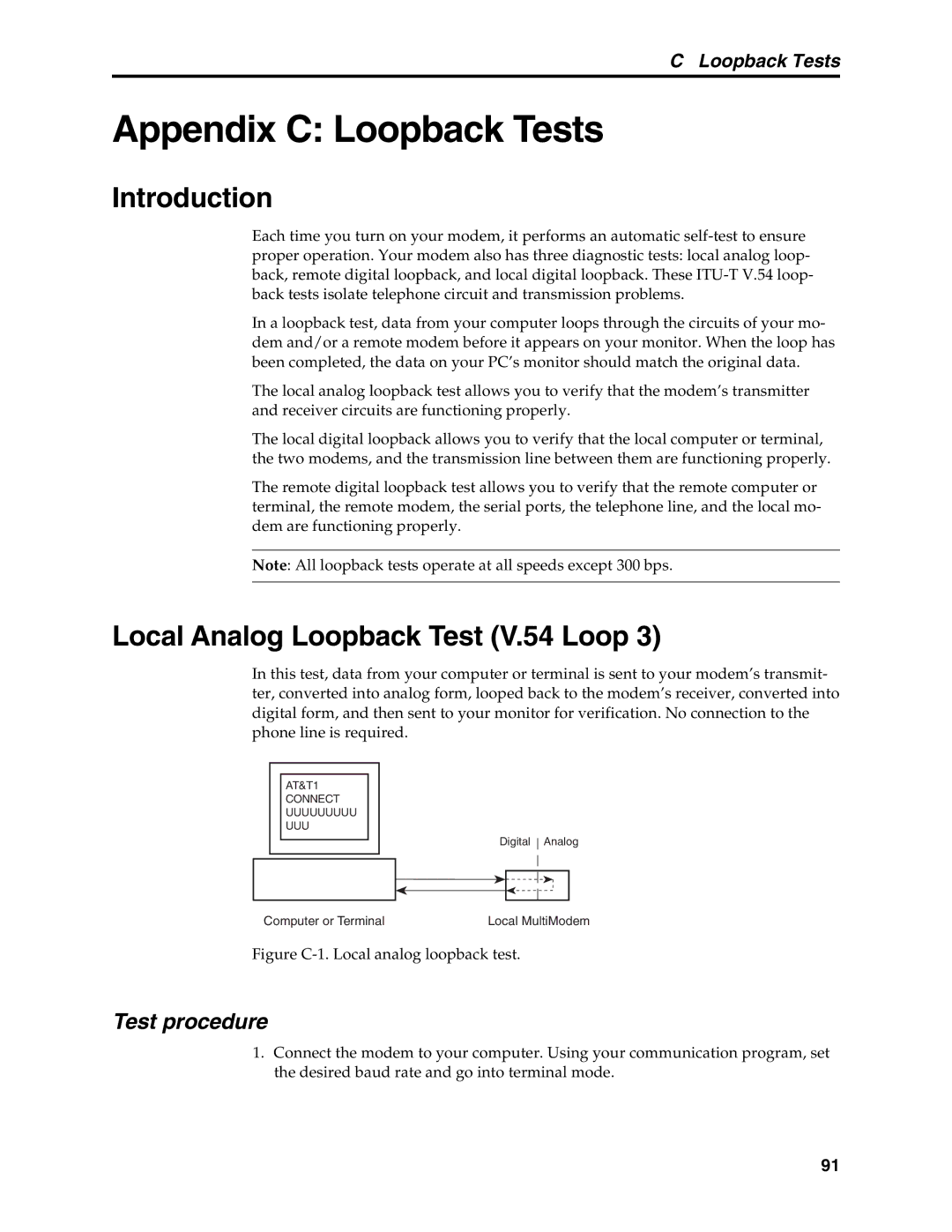
C Loopback Tests
Appendix C: Loopback Tests
Introduction
Each time you turn on your modem, it performs an automatic
In a loopback test, data from your computer loops through the circuits of your mo- dem and/or a remote modem before it appears on your monitor. When the loop has been completed, the data on your PC’s monitor should match the original data.
The local analog loopback test allows you to verify that the modem’s transmitter and receiver circuits are functioning properly.
The local digital loopback allows you to verify that the local computer or terminal, the two modems, and the transmission line between them are functioning properly.
The remote digital loopback test allows you to verify that the remote computer or terminal, the remote modem, the serial ports, the telephone line, and the local mo- dem are functioning properly.
Note: All loopback tests operate at all speeds except 300 bps.
Local Analog Loopback Test (V.54 Loop 3)
In this test, data from your computer or terminal is sent to your modem’s transmit- ter, converted into analog form, looped back to the modem’s receiver, converted into digital form, and then sent to your monitor for verification. No connection to the phone line is required.
AT&T1
CONNECT
UUUUUUUUU
UUU
Digital Analog
Computer or Terminal | Local MultiModem |
Figure C-1. Local analog loopback test.
Test procedure
1.Connect the modem to your computer. Using your communication program, set the desired baud rate and go into terminal mode.
91
